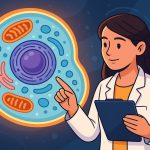Pregnancy and childbirth represent one of the most profound biological and emotional experiences in human life. From conception to delivery, this journey combines complex physiological processes with deep psychological and social meaning. Modern medicine, guided by centuries of scientific discovery, now allows doctors to monitor and support both mother and child at every stage, transforming what was once purely natural into a blend of nature, science, and care.
The Beginning – From Conception to Embryo
Pregnancy begins when a sperm cell fertilizes an egg, forming a single cell called a zygote. This zygote divides rapidly, becoming a blastocyst, which implants itself in the wall of the uterus. Once implantation occurs, the body releases hormones—particularly human chorionic gonadotropin (hCG)—which signal that pregnancy has begun. During the first trimester, the embryo develops major organs such as the heart, brain, and spine. By the end of the twelfth week, it becomes a fetus, marking the transition into more recognizable human form.
The Stages of Pregnancy
Pregnancy is traditionally divided into three trimesters, each with unique milestones:
- First Trimester (Weeks 1–12): Organ formation and hormonal changes begin. This is often when women experience nausea, fatigue, and emotional fluctuation.
- Second Trimester (Weeks 13–27): The fetus grows rapidly, and the mother typically feels the first movements. Many describe this as the most comfortable phase.
- Third Trimester (Weeks 28–40): The baby gains weight, organs mature, and the mother’s body prepares for labor. Medical experts closely monitor fetal position and heartbeat to ensure readiness for birth.
Each trimester represents a delicate balance between maternal health, fetal growth, and hormonal adaptation, supported by modern prenatal care and screening.
The Physiology of Childbirth
Childbirth, or labor, begins when hormonal signals—particularly oxytocin—trigger uterine contractions. These contractions help open the cervix, allowing the baby to move through the birth canal. Labor typically occurs in three stages:
- Dilation: The cervix opens fully. This stage can last several hours.
- Delivery of the Baby: Strong contractions help push the baby out.
- Delivery of the Placenta: The placenta, which nourished the baby during pregnancy, is expelled after birth.
Pain management methods range from natural breathing techniques to epidural anesthesia, depending on personal choice and medical guidance. Advances in obstetrics have greatly improved safety, reducing risks of complications for both mother and child.
Modern Medicine and Pregnancy Care
Today, technology plays a vital role in ensuring healthy pregnancies. Ultrasound imaging allows visualization of the fetus, monitoring its growth, heartbeat, and development. Genetic testing helps detect congenital conditions early. Regular check-ups track maternal health indicators like blood pressure, glucose, and iron levels. Nutritionists emphasize balanced diets rich in folic acid, calcium, and omega-3 fatty acids to support fetal brain and bone formation. Doctors stress avoiding alcohol, tobacco, and stress to promote optimal health.
The Psychological and Emotional Journey
Beyond biology, pregnancy and childbirth are deeply emotional experiences. Hormonal shifts influence mood and perception, while the anticipation of parenthood brings joy, anxiety, and profound transformation. Many expectant mothers experience heightened sensitivity and stronger emotional connection to their unborn child. After childbirth, the postpartum period involves physical recovery and adaptation to new responsibilities. Support from partners, family, and healthcare professionals plays a crucial role in maternal well-being and preventing postpartum depression.
Expert Perspectives
According to Dr. Catherine Monk, a leading researcher in perinatal psychology, “Pregnancy is not just a physical process—it’s also the beginning of a psychological bond between mother and child.” Obstetricians like Dr. Lisa Masterson emphasize the importance of personalized prenatal care: “Every pregnancy is unique; good communication and medical support ensure the healthiest outcomes.” Experts across disciplines agree that empowering mothers with information, access to care, and emotional support dramatically improves childbirth experiences and long-term family health.
Ethical and Cultural Aspects
Cultural beliefs about pregnancy and childbirth vary widely. In some societies, childbirth is viewed as a sacred ritual; in others, it is a medicalized event. Ethical questions arise concerning medical intervention, such as cesarean sections, in-vitro fertilization (IVF), and surrogacy. Healthcare systems worldwide strive to balance traditional practices with scientific safety, ensuring both autonomy and well-being for women.
The Miracle of Birth
Despite technological progress, childbirth remains a moment of awe. Each birth marks the continuation of human life, connecting generations through biology and emotion. The first breath of a newborn is both a scientific marvel and a timeless symbol of renewal. For mothers, the journey often transforms identity—introducing strength, patience, and love deeper than any other human experience.
Interesting Facts
- The average pregnancy lasts about 280 days, or 40 weeks.
- The placenta is the only temporary organ the human body grows and expels.
- Babies can respond to sound from as early as 18 weeks in the womb.
- Around 130 million babies are born worldwide every year.
- The hormone oxytocin promotes both labor contractions and maternal bonding.
Glossary
- Zygote – The first cell formed when a sperm fertilizes an egg.
- hCG (Human Chorionic Gonadotropin) – A hormone indicating pregnancy.
- Placenta – The organ that supplies oxygen and nutrients to the fetus.
- Trimester – One of three stages of pregnancy, each lasting about three months.
- Oxytocin – A hormone that induces labor and strengthens emotional bonding.
- Ultrasound – Imaging technology that uses sound waves to view the fetus.
- Epidural Anesthesia – A form of pain relief administered during childbirth.
- Postpartum Depression – Emotional difficulty that can occur after childbirth.
- Cesarean Section (C-Section) – A surgical procedure to deliver a baby.
- Folic Acid – A vitamin that helps prevent neural tube defects in the fetus.


